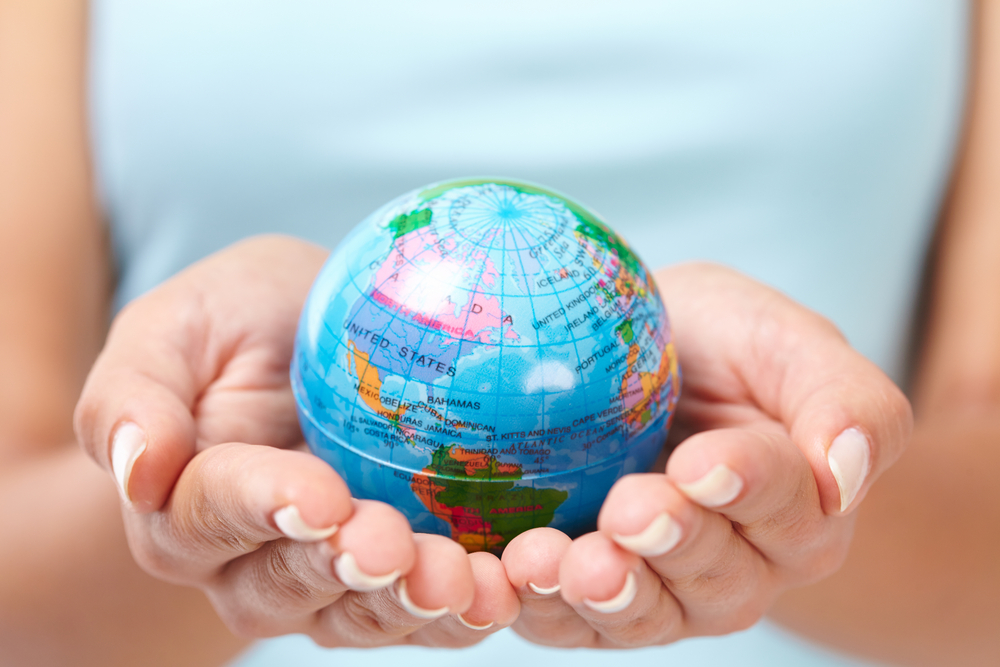Global statistics published by the International Society of Aesthetic Plastic Surgery (ISAPS) indicate that from Brazil to South Korea, cosmetic surgery has been gaining serious momentum in recent years. And with the results demonstrating how countries often specialize in different cosmetic procedures, these reports also affords us a glimpse at how standards of beauty differ across cultures.
You’ve heard about tummy tucks and liposuction. You may even have spent time wondering who among your favorite celebrities has had a facelift, nose job, or breast implants. For that matter, you might have found yourself questioning if plastic surgery is as common in other countries as it is here in America.
The International Society of Aesthetic Plastic Surgery (ISAPS) reports that while the United States is still the worldwide leader when it comes to the overall number of plastic surgery procedures performed, other countries are catching up fast, with some pursuing practices and procedures you’ve likely never even heard of.
The cosmetic surgery preferences of the seven countries and regions we explore below might surprise and challenge your understanding of what plastic surgery is capable of, while simultaneously teaching you a little about that moving target we call “beauty.”
What Countries Have the Most Plastic Surgery?
When the International Society of Aesthetic Plastic Surgery (ISAPS) released their 2015 statistics regarding the popularity of plastic surgery in countries around the world, it came as no surprise that the United States topped the list for the most surgical and non-surgical procedures performed with a whopping 4,064,571, roughly twice as many as the runner up, Brazil, at 2,085,505. And why not? Plastic surgery has been a staple of the entertainment industry, a hallmark of the rich and famous, and a dedicated pastime for wealthy Americans everywhere.
But plastic surgery did not get it’s start in America and certainly doesn’t stop there. Rhinoplasties (aka “nose-jobs”) were underway in India as early as the late 18th century. Even the ancient Romans employed plastic surgery methods on certain body parts, like the ears, for cosmetic purposes. In modern times plastic surgery has become a way of life for many cultures outside of the United States, including Iran and South Korea.
As methods become more varied, effective, and safe, more and more cultures are seeking to achieve the highest possible standards of beauty through medical means. But with different practices trending in different regions, it’s clear that these standards of beauty are a moving target.
Some quick facts:
- There were more than 21 million surgical and nonsurgical cosmetic procedures performed worldwide in 2015.
- 9.6 million surgical procedures were performed in 2015.
- The United States held the top spot for total number of surgical procedures performed.
- The United States accounted for 14.7%, Brazil for 12.7%, Mexico for 4.8%, South Korea for 4.6%, and India for 4.4% of the surgical procedures.
- The cosmetic surgical procedures performed most frequently were breast augmentation, liposuction, blepharoplasty, and abdominoplasty.
Source: ISAPS
Is There a Worldwide Standard of Beauty?
By all measures it appears different ethnicities do have somewhat varied interpretations of what constitutes physical beauty. ISAPS tells us that breast augmentation reigns supreme in the United States. With 297,297 breast augmentation surgeries performed in the US last year alone, it was the most popular cosmetic surgery in the country. Brazil was the country with the second most breast implant operations, but gluteoplasty (buttocks augmentation) remains the most popular procedure among Brazilians.
On the other hand, people in east Asian countries often prefer reduction procedures, enjoying everything from calf and eyelid reduction to thinning out their faces, a practiced often referred to as “square-faced surgery.” Meanwhile, Middle Eastern cultures, most notably Iran, focus heavily on rhinoplasty and other surgeries centered on the face. In short, what a country or culture values when it comes to plastic surgery depends on a combination of various ethnic standards of beauty and societal norms.
The United States is #1 in Mommy Makeovers
We’ve already discussed the prevalence of breast implants in the United States. However, these implants are often part of a larger collection of surgeries known colloquially as the “mommy makeover.” In the US, the term typically refers to a collection of two or three surgeries – usually tummy tucks, breast implants, and liposuction – aimed at helping women get back to their pre-pregnancy bodies.
This is evidenced by the fact that the US not only leads in breast implants, but also in liposuction, with 243,306 surgeries performed last year, and abdominoplasty (tummy tuck), with 128,961 surgeries performed in the same time frame. Clearly, mommy makeovers have become especially popular among American women frustrated with the challenge of getting back in shape when they have a full-time job and rugrats to care for.
Of course, these issues are not unique to the US. Women all over the world struggle with the sagging breasts, stretched bellies, and weight gain that are the by-products of pregnancy.
Brazil Focused South of the Border
As the number two country in overall cosmetic procedures performed in 2015, Brazil has seen its fair share of breast augmentations, liposuctions, and more. But it’s the “butt augmentation” that has the most Brazilian natives flocking to plastic surgery clinics. Otherwise known as a gluteoplasty, this procedure uses patients’ own fat to give them fuller looking backsides with more lift.
It’s no wonder that the procedure is so popular with Brazilians. Some forms of festive dress and dances like the Samba showcase this particular area of the body. In fact, the procedure is so popular in Brazil that it’s known as the “Brazilian butt lift” even outside of the country. The American Society for Plastic Surgeons released statistics in 2015 that showed dramatic growth in the popularity of butt lifts in the United States as well. Here in the States, the trendy new procedure was up 89% since 2000.
Unfortunately, gluteoplasty is not without its risks. Patients could suffer from a fat embolism. In other words, fat could enter the bloodstream during surgery and cause dangerous blockages. Although fat embolisms can occur with surgery, broken bones, or even as a result of childbirth, it has a slightly higher chance of occurring in procedures where fat is transferred.
Iran Makes Plastic Surgery a Status Symbol
Tehran has quickly carved out a reputation as the nose job capital of the world. While Iran does enjoy a wide array of surgeries, nose jobs, aka rhinoplasties, make up the vast majority of them. According to Doctor Javad Amirizad of the Iranian Association of Cosmetic and Plastic Surgeons, annually nose jobs account for at least 60% of all cosmetic surgeries in Iran.
Most Iranians going under the knife are women seeking to reduce the size and redefine the shape of their noses. Interestingly enough, the practice has evolved into a sort of status symbol. Named “bandages of honor,” post-op bandages tend to be worn with pride. In fact, many women continue wearing the bandages long after their noses have healed. The bandages themselves have become a symbol of wealth, given the high cost of the procedure.
Plastic Surgery in South Korea: Baby Face or Western Facial
Go to Seoul, South Korea and you’re likely to find thousands of faces that look eerily alike. At least that’s how Patricia Marx tells it in her New Yorker piece “About Face.” Marx expounds on the popularity of plastic surgery in Korea, telling the reader, “You know you are in the right neighborhood by the preponderance of slightly bruised and swollen faced men and women.” She’s referring to the Improvement Quarter, a section of Seoul that boasts of roughly 400-500 clinics in one square mile.
But what exactly are all these people trying to achieve? It seems that many South Koreans, women in particular, are pulled in two different directions. As in many East Asian countries, some South Korean women seek a more western look. To this end they’ll undergo a variety of facial procedures, including nose jobs, eyelid reduction, and cheek reduction, all in the effort to acquire a more angled face with larger eyes.
Conversely, other South Korean women covet the natural baby faces of so-called “bagel girls”, South Korean sex symbols most notable for having baby faces and womanly bodies. The increasing popularity of the bagel girl look has encouraged some Korean women to pursue procedures that give them fuller, wider faces instead of more traditional narrower ones.
Regardless of the direction these women choose to follow, there’s no denying South Koreans love their plastic surgery. Roughly two-thirds of South Koreans have undergone at least one cosmetic procedure in their lifetimes, making theirs the highest per capita rate of plastic surgery worldwide.
Asia Says “No” to Fuller Calves
Surgical and non-surgical methods for calf reduction are not exclusive to East Asian countries, but do tend to be more popular in countries like China, Japan, and South Korea. East Asian people are typically shorter than their western counterparts, which means they tend to have shorter, thicker calves.
The Asian obsession with long thin legs is often evident in their advertisements. Women are sometimes photoshopped to such an extent that their legs become inhumanly, even comically long. This seems to be a reflection of a greater trend that values slender aesthetics.
Calf reduction can be achieved through different techniques. Most often, patients receive Botox injections that work on the circumference of their calves over time. Wendy Lewis, a New York based cosmetic surgery expert, suggests that this practice is most common among Chinese women. “In China women use Botox to reduce the circumference of their calves,” she recently stated over the course of a discussion about differing standards of beauty held worldwide.
Calf reduction can also be achieved surgically, where apparently it’s possible to remove as much as 60% of a patient’s calf. Surgical calf reductions remain controversial and highly risky, however, and rightly so, given the calf is primarily muscle and removing muscle can negatively affect a patient’s ability to use their legs.
India Takes Risks with Limb Lengthening
India wins the gold medal when it comes to strange and risky cosmetic surgery. Limb lengthening surgery is complex and incredibly painful to begin with, but it certainly doesn’t help that in India the practice is also largely unregulated, leading to under-qualified surgeons sometimes performing these potentially dangerous operations within months of finishing their training.
Limb lengthening involves breaking the bones in the patient’s legs and placing them in a brace. The brace is gradually lengthened as the bones knit themselves together. Ideally, the bones will knit across the newly formed gap, creating more bone and, therefore, more leg. However, sometimes the bones don’t fuse properly and the limb must be amputated.
As hard as it might seem to believe, many Indians feel the risk is worth the reward. Those who’ve undergone the surgery often cite their short stature as one of the primary reasons they’ve had difficulty finding a steady job or landing a spouse.
Germany Doesn’t Lose Sight of Penises
Women aren’t the only ones looking for a little medical assistance in their quest for the perfect look. Some men have turned to penis enlargement surgery as a way to boost their confidence, and theoretically, at least, to please their partners. And when it comes to enlarging penises, Germany is the place to be. More surgeries of this kind are performed in Germany than anywhere else on Earth.
Even though the overall number of penis enlargement operations worldwide is down one third from 2013, according to the ISAPS, Germany remains the penile enlargement capital of the world by far, no other country even comes close. To give you a better idea, the IASPS reports that in 2013, 2,786 penile enlargement surgeries were performed in Germany, the patron nation of male virility, whereas the country with the second most surgeries was Brazil, where no more than a measly 473 penis enlargement operations took place.
Penile enlargement surgery, also known as phalloplasty, involves everything from penis lengthening and widening to glanular enhancement. Patients can be subject to injections, the cutting of ligaments, implants, and risk some truly nasty side effects. Germany aside, penile enlargement surgery remains rare and will likely stay that way for a while.
Finding Common Ground
While it’s clear that different countries value different physical traits – whether beauty means bigger breasts, rounder buttocks, smoother faces, or thinner calves – globally everyone seems to agree on the fundamental idea behind cosmetic surgery; that those who explore the possibilities provided by plastic surgery do so because they want to be in control of their bodies.








